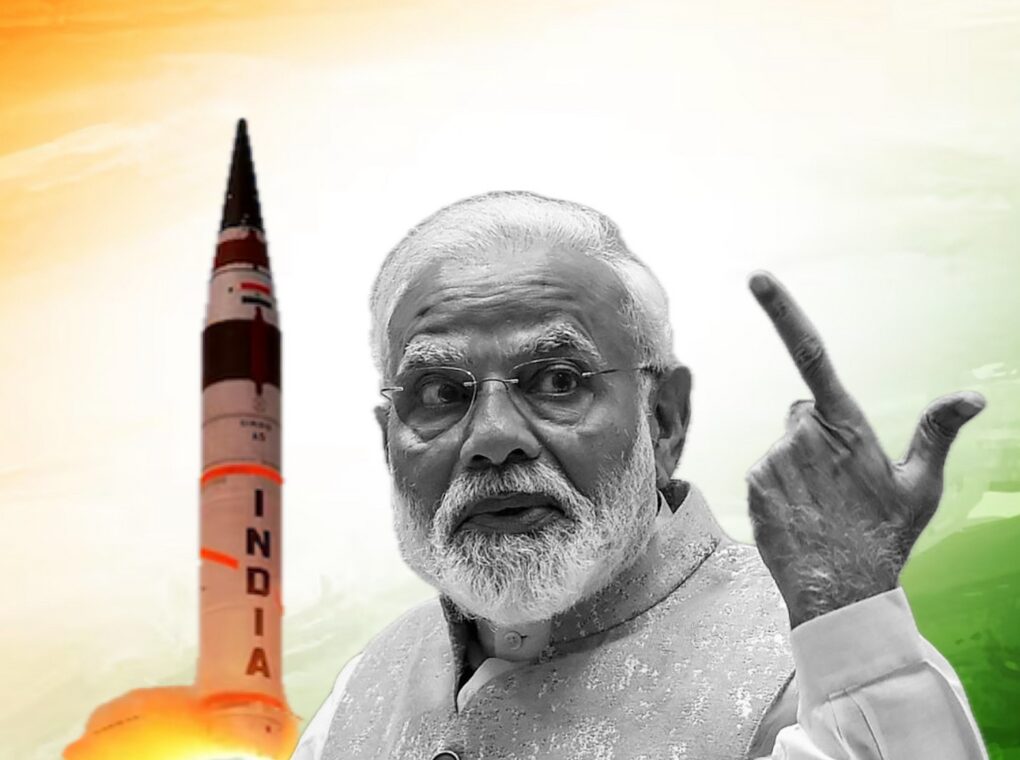India recently conducted a successful test of its Agni-5 missile, an indigenously developed intercontinental ballistic missile (ICBM) that considerably enhances its strategic capabilities and nuclear deterrence posture on the global stage. This latest development secures India’s position among the few countries possessing advanced long-range missile technology, placing it alongside major powers like the United States, Russia, China, and others.
The Agni-5 Test
On August 20, 2025, “Intermediate Range Ballistic Missile Agni-5 was successfully test-fired from the Integrated Test Range, Chandipur in Odisha on August 20. The launch validated all operational and technical parameters,” the Defence Ministry said in a statement.
With a range exceeding 5,000 kilometers and planned upgrades pushing it towards 7,500 kilometers—Agni-5 is capable of striking targets deep within Asia and beyond. Notably, this missile incorporates Multiple Independently Targetable Reentry Vehicle (MIRV) technology, allowing it to carry and deploy multiple nuclear warheads simultaneously against diverse targets.
The missile’s launch confirmed operational readiness under India’s Strategic Forces Command, which manages the country’s nuclear arsenal. This test was part of routine exercises meant to ensure reliability and precision as India upholds its declared policy of credible minimum deterrence.
India test-fired Agni-5 missile in March last year as well. The Agni 1 to 4 missiles have ranges from 700 km to 3,500 km and they have already been deployed. Last month, India successfully test-fired nuclear-capable short-range ballistic missiles Prithvi-II and Agni-I.
Last year’s trial conducted on March 11, 2024, was labelled ‘Mission Divyastra’. The test was significant as it featured multiple independently targetable re-entry vehicle (MIRV) technology. MIRV allows a single missile to carry and launch multiple nuclear warheads. Each warhead can be directed to a different target. The warheads follow separate trajectories and can strike targets hundreds of kilometres apart. The test of the solid-fuelled, three-stage Agni-5 was a routine training trial carried out periodically by the SFC of already inducted missiles.
At present, Agni-5 can carry up to three nuclear warheads, significantly enhancing India’s second-strike capability and reinforcing its no-first-use nuclear doctrine. Being land-based and road-mobile, it offers high survivability and flexibility of deployment.
Defence experts note that its range and precision make it a credible deterrent against adversaries located both in the region and beyond. Future variants are expected to be equipped with bunker-busting technologies, making them effective against fortified underground installations and hardened military targets.
This launch puts India’s rivals like China and Pakistan well within range of the weapon. India and China are locked in a fierce battle for influence across the Asia-Pacific.
Who Else Has the ICBMs?
Globally, only a handful of nations possess ICBM capabilities, reflecting the technology’s strategic and geopolitical significance. The primary countries include: United States, Russia, China, France, United Kingdom, Israel and North Korea.
Each of these nations developed ICBMs as integral parts of their nuclear triads — land, sea, and air-based deterrents — capable of striking targets thousands of kilometers away with high precision. India’s entry into this exclusive club elevates its defense posture, expanding its ability to project power and deter aggression beyond its immediate neighborhood.
The Pakistan Factor
India’s missile advancements inevitably influence its immediate neighbor Pakistan, which has long viewed India’s strategic capabilities with caution. Pakistan’s own missile arsenal primarily includes the Shaheen series, with the Shaheen III boasting a range of about 2,500 kilometers, considerably shorter than Agni-5’s reach. Pakistan’s leadership remains concerned about the balance of power in South Asia, where missile range and nuclear capabilities directly impact deterrence and security calculations.
The Agni-5’s striking range covers all of Pakistan’s territory and extends well beyond it, increasing Islamabad’s strategic vulnerabilities. Pakistan’s response, while not fully public, is likely to involve accelerating missile and nuclear modernization programs to counter India’s expanded reach, thus fuelling the long-standing arms competition between the two nuclear-armed neighbours. Pakistan’s Prime Minister Shehbaz Sharif announced last week that his country would create a new military force to oversee missile combat capabilities in conventional warfare.
China’s Calculus
Both India and China have navigated a frigid relationship after deadly clashes at their shared Himalayan border in 2020 pushed the two further apart than at any time in decades. A report published in June by the Stockholm International Peace Research Institute (SIPRI) estimates that China now has around 600 nuclear warheads, while India has 180.
The Agni-5 test has come at a time which coincides with the visit of Chinese Foreign Minister Wang Yi, a trip that set the stage for Modi’s own late-August visit to China for a summit of the Shanghai Cooperation Organization (SCO) a security grouping that includes Russia and Pakistan.
From Beijing’s perspective, India’s missile enhancements underscore the need to maintain a robust deterrence posture. While China invests in expanding and updating its missile forces, India’s advances represent a significant challenge to China’s regional dominance, limiting Beijing’s freedom of action in contested areas.
Indo-Pacific Strategic Implications
The development of Agni-5 reverberates far beyond South Asia. For the broader international community, India’s ICBM capability represents a shift in the balance of power in the Indo-Pacific. The missile’s long-range places not just regional adversaries but also parts of Europe and even Russia within its operational envelope, depending on future upgrades.
This expanded reach contributes to India’s strategic autonomy, allowing it to negotiate from a position of strength with global powers, reinforcing its role as a major player in multipolar international security architectures.
India’s successful Agni-5 test signals more than just technological advancement; it marks a pivotal moment in global and regional strategic dynamics. As the eighth country with credible ICBM capability, India asserts its growing influence amid shifting geopolitical fault lines.
The presence of such capabilities reshapes deterrence equations, particularly concerning Pakistan and China, each of whom must reassess their strategic calculus. For the international community, it is another reminder that arms developments in South Asia will play a crucial role in shaping 21st-century security environments, compelling policymakers to balance deterrence, diplomacy, and stability carefully.
